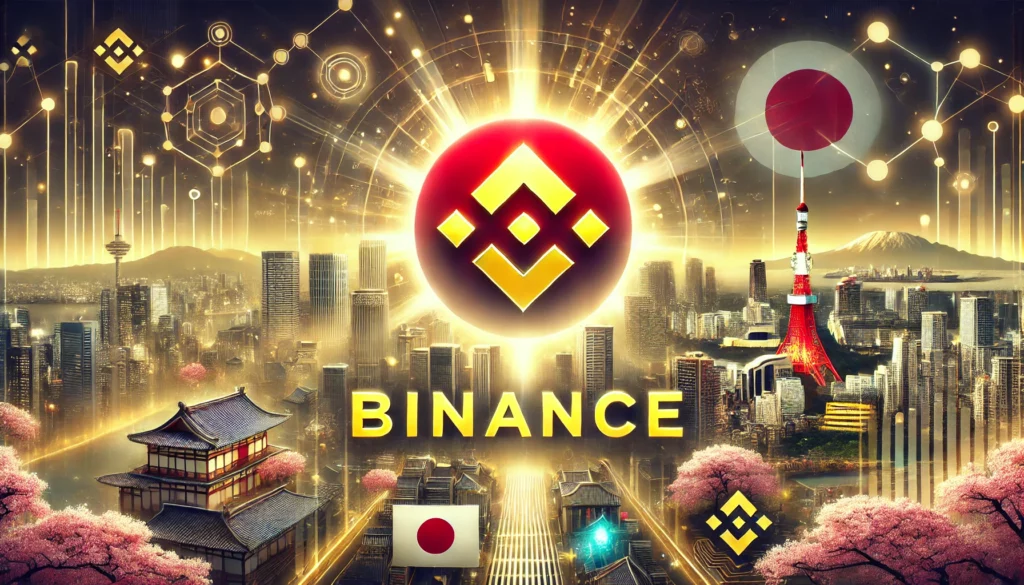Binance, the world’s largest cryptocurrency exchange by trading volume, is making a significant return to the Japanese market through the acquisition of the Sakura Exchange BitCoin (SEBC). This strategic move comes years after Binance exited Japan due to regulatory challenges and reflects the company’s efforts to re-establish itself in one of the most tightly regulated cryptocurrency markets globally. This article delves into the background of Binance’s return, the implications of the SEBC acquisition, and the broader impact on Japan’s crypto ecosystem.
Background: Binance’s Exit and Regulatory Challenges in Japan
In 2018, Binance withdrew from the Japanese market after failing to secure a license under the country’s Financial Services Agency (FSA). Japan has one of the world’s most stringent regulatory frameworks for cryptocurrency exchanges, requiring platforms to obtain licenses and comply with strict anti-money laundering (AML) and consumer protection laws.
The FSA’s oversight aims to protect investors and ensure market stability, but its rigorous standards have posed significant challenges for foreign exchanges attempting to operate in Japan. Binance’s previous unlicensed operations led to warnings from the FSA, forcing the company to exit the market temporarily.
The SEBC Acquisition: A Strategic Move
In November 2022, Binance announced its acquisition of SEBC, a licensed Japanese cryptocurrency exchange. The acquisition marks Binance’s compliance-driven approach to re-entering the Japanese market by leveraging SEBC’s regulatory status. Here are the key aspects of the deal:
- Regulatory License
SEBC is fully licensed under Japan’s Payment Services Act, giving Binance a compliant entry point into the market. The acquisition bypasses the lengthy and complex process of applying for a new license. - Localized Operations
Through SEBC, Binance can adapt its services to align with Japan’s regulatory requirements and consumer expectations. This includes integrating features like stringent KYC (Know Your Customer) and AML protocols. - Strategic Timing
Binance’s return comes at a time when Japan is fostering a more crypto-friendly environment, including easing tax burdens on cryptocurrency issuers and encouraging innovation in blockchain technology.
Implications of Binance’s Return to Japan
1. Strengthened Market Position
Re-establishing a presence in Japan allows Binance to tap into a mature and lucrative crypto market. Japan has a highly active cryptocurrency community, with millions of users and significant trading volumes. Binance’s global brand and advanced trading features position it to capture a substantial share of this market.
2. Competitive Landscape
Japan’s cryptocurrency exchange sector is dominated by local players such as bitFlyer, Coincheck, and GMO Coin. Binance’s entry introduces a formidable competitor with extensive resources and a comprehensive suite of services, potentially driving innovation and competition within the industry.
3. Enhanced Regulatory Compliance
The SEBC acquisition underscores Binance’s commitment to adhering to local regulations, signaling a shift in its global strategy. By prioritizing compliance, Binance can avoid regulatory conflicts and build stronger relationships with authorities in Japan and beyond.
4. Expanded Service Offerings
Binance’s technology and ecosystem extend beyond basic cryptocurrency trading. Through SEBC, Binance can introduce advanced services such as staking, decentralized finance (DeFi) products, and NFT marketplaces to Japanese users, diversifying the country’s crypto offerings.
The Impact on Japan’s Cryptocurrency Ecosystem
1. Increased Innovation
Binance’s presence could catalyze innovation within Japan’s crypto sector by introducing cutting-edge technologies and products. This aligns with Japan’s broader goal of becoming a global hub for blockchain development.
2. Consumer Benefits
Japanese consumers stand to benefit from Binance’s competitive fees, deep liquidity, and extensive range of cryptocurrencies. Enhanced accessibility to global markets could further accelerate cryptocurrency adoption in Japan.
3. Regulatory Influence
Binance’s successful compliance with Japanese regulations may set a precedent for other international exchanges seeking to enter the market. This could lead to a more diverse and competitive ecosystem, fostering greater consumer trust.
4. Tax Reforms and Market Growth
Japan’s recent efforts to ease corporate tax policies on crypto-related businesses may create a more favorable environment for Binance and other players. By reducing barriers for blockchain companies, Japan is positioning itself as a leader in digital asset innovation.
Challenges Ahead
Despite the optimistic outlook, Binance’s return to Japan is not without challenges:
- Regulatory Scrutiny
The FSA is likely to closely monitor Binance’s operations to ensure full compliance with its rigorous standards. Any missteps could jeopardize Binance’s standing in the market. - Rebuilding Trust
Binance must rebuild trust with Japanese regulators and users after its abrupt exit in 2018. Transparent communication and a robust compliance framework will be crucial. - Market Competition
Competing with established domestic exchanges requires Binance to offer localized services that resonate with Japanese users. Tailoring its global offerings to suit local needs will be critical.
Conclusion
Binance’s acquisition of SEBC marks a pivotal moment in the exchange’s global expansion strategy and Japan’s cryptocurrency landscape. By re-entering Japan through a compliant and strategic approach, Binance has the potential to redefine the market and drive innovation in the region.
As Binance navigates the challenges of operating in one of the world’s most regulated crypto environments, its success in Japan could serve as a blueprint for its expansion into other tightly controlled markets. For Japan, Binance’s return signifies a step toward becoming a global leader in cryptocurrency adoption and blockchain development.


